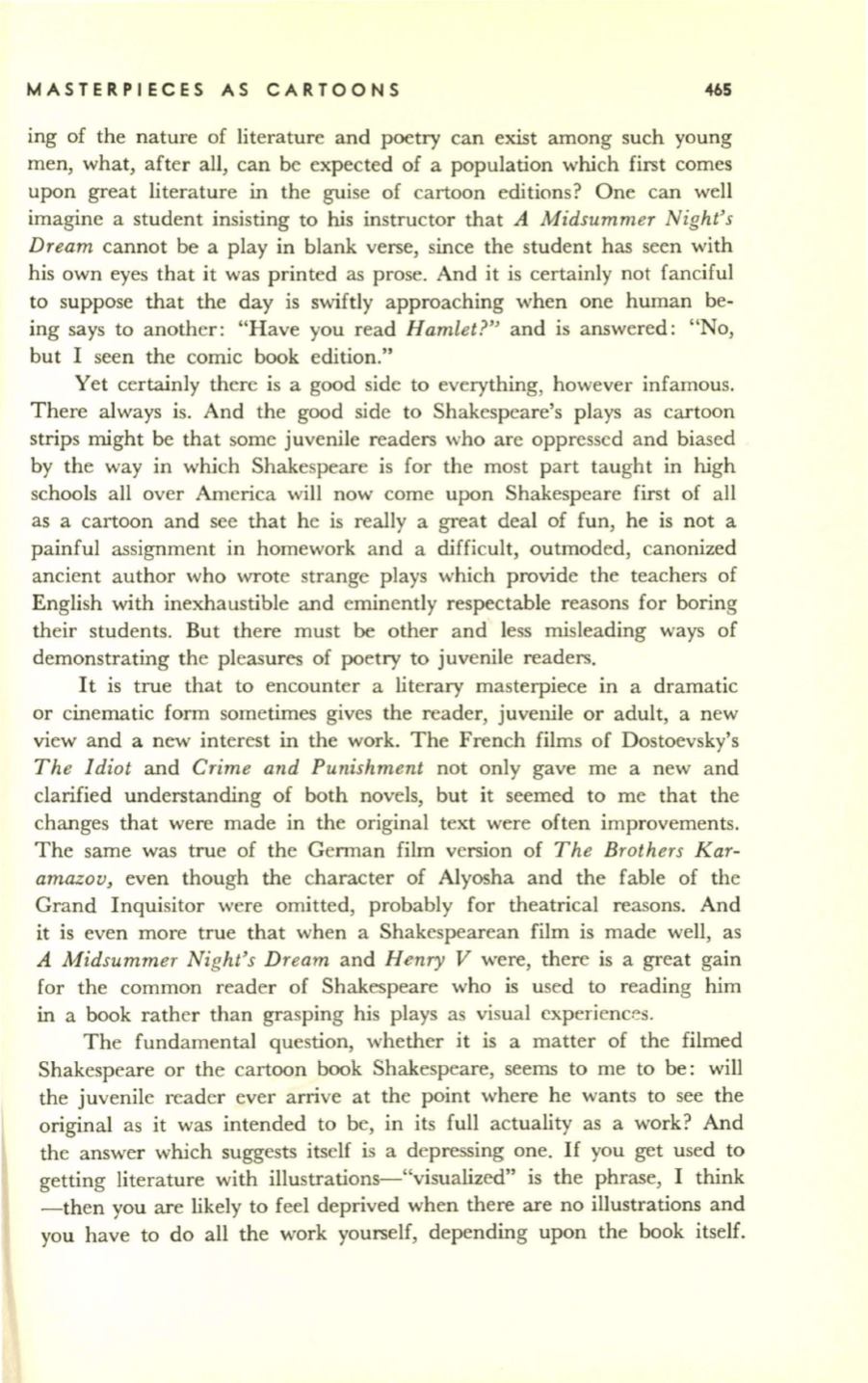
MASTERPIECES AS CARTOONS
465
ing of the nature of literature and poetry can exist among such young
men, what, after all, can be expected of a population which first comes
upon great literature in the guise of cartoon editions? One can well
imagine a student insisting to his instructor that
A Midsummer Night's
Dream
cannot be a play in blank verse, since the student has seen with
his own eyes that it was printed as prose. And it is certainly not fanciful
to suppose that the day is swiftly approaching when one human be–
ing says to another: "Have you read
Hamlet
1" and is answered: "No,
but I seen the comic book edition."
Yet certainly there is a good side to everything, however infamous.
There always is. And the good side to Shakespeare's plays as cartoon
strips might be that some juvenile readers who are oppressed and biased
by the way in which Shakespeare is for the most part taught in high
schools all over America will now come upon Shakespeare first of all
as a cartoon and see that he is really a great deal of fun, he is not a
painful assignment in homework and a diffi cult, outmoded, canonized
ancient author who wrote strange plays which provide the teachers of
English with inexhaustible and eminently respectable reasons for boring
their students. But there must
be
other and less misleading ways of
demonstrating the pleasures of poetry to juvenile readers.
It
is true that to encounter a literary masterpiece in a dramatic
or cinematic form sometimes gives the reader, juvenile or adult, a new
view and a new interest in the work. The French films of Dostoevsky's
The Idiot
and
Crime and Punishment
not only gave me a new and
clarified understanding of both novels, but it seemed to me that the
changes that were made in the original text were often improvements.
The same was true of the German film version of
The Brothers Kar–
amazov,
even though the character of Alyosha and the fable of the
Grand Inquisitor were omitted, probably for theatrical reasons. And
it is even more true that when a Shakespearean film is made well, as
A Midsummer Night's Dream
and
Henry V
were, there is a great gain
for the common reader of Shakespeare who is used to reading him
in a book rather than grasping his plays as visual
cxperienc~s.
The fundamental question, whether it is a matter of the filmed
Shakespeare or the cartoon book Shakespeare, seems to me to be: will
the juvenile reader ever arrive at the point where he wants to see the
original as it was intended to be, in its full actuality as a work? And
the answer which suggests itself is a depressing one.
If
you get used to
getting literature with ilIustrations-"visualized" is the phrase, I think
-then you are likely to feel deprived when there are no illustrations and
you have to do all the work yourself, depending upon the book itself.


